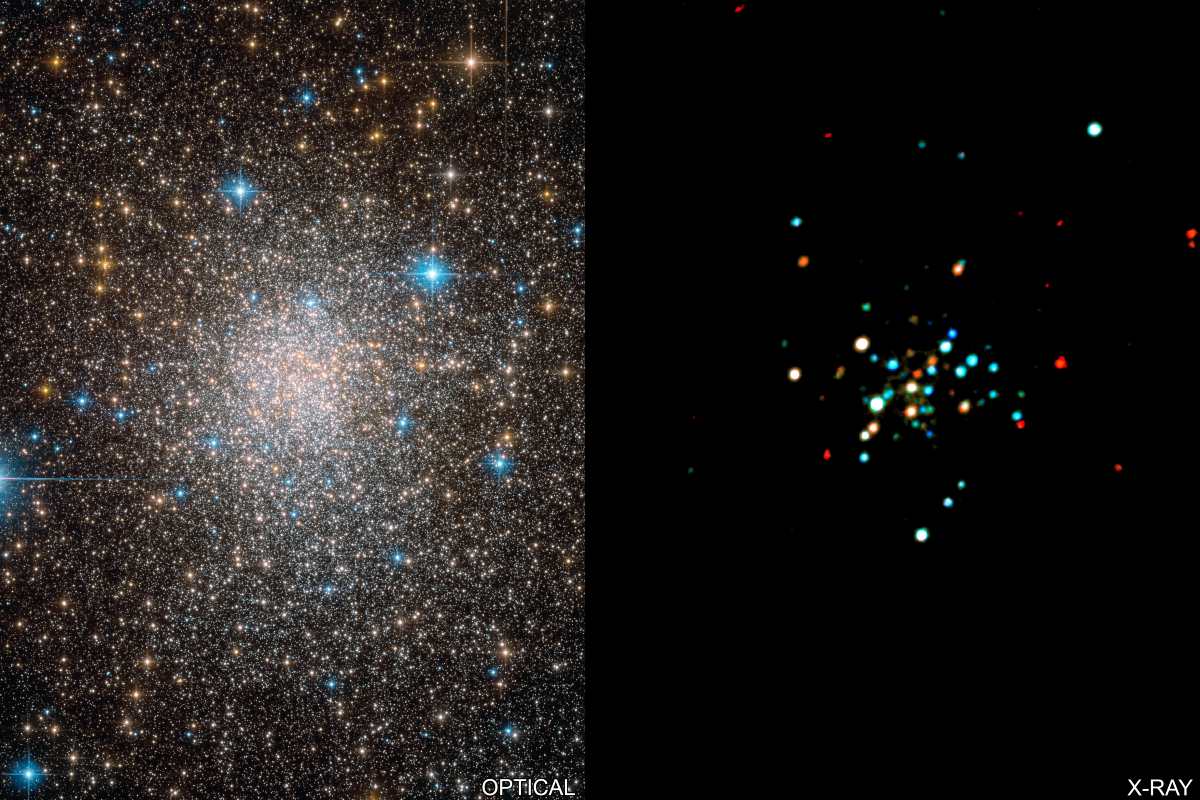
A duo of stars in the cluster Terzan 5 are swapping between two unique states—a phenomenon that’s been observed only three times before, and one of particular interest to astronomers. Image credit: NASA/Chandra X-Ray Observatory
Shrouded in a dense collection of stars, the stellar cluster Terzan 5 contains hundreds of thousands of stars—including a duo of stars whose physics aren’t yet understood, and caught the eye of an international team of astronomers earlier this year.
“In this study, we observed an exotic stellar binary system using both X-rays and radio waves,” said Craig Heinke, professor in the University of Alberta’s Department of Physics. “Only ten years ago, we knew of neutron stars that were pulsars, and neutron stars that accreted matter from companion stars, but none that switched back and forth.”
And that’s just what scientists of the Milky-way ATCA and VLA Exploration of Radio-sources in Clusters (MAVERIC) team have observed in this system in the new image released in February, using NASA’s Chandra X-ray Observatory.
The stellar system was described in a study led by UAlberta physics PhD graduate Arash Bahramian, now at Curtin University. In the system, a normal star and dense neutron star orbit each other, and at times, stellar material is seen to be absorbed by the denser neutron star—a phenomenon sometimes referred to as stellar vampirism. But unusually, at other times, the flow stops, and the neutron star’s strong magnetic field accelerates particles to near light-speed, generating strong radio emissions—known as a pulsar.
“We know of only a handful of these stars that switch between states, called transitional millisecond pulsars,” said Gregory Sivakoff, associate professor of physics and co-investigator on the MAVERIC team.”We had long thought that neutron stars had to eat material from a nearby star to spin up to such fast speeds, but it was only with transitional millisecond pulsars that we found the silver bullet that proved our hypothesis was likely true.”
Only three confirmed examples of these identity-changing systems are known, explained Sivakoff. The first was discovered in 2013 using Chandra and several other X-ray and radio telescopes—which makes the new image of the system all the more exciting.
“The first of these systems discovered elicited enormous excitement, as they represented a holy grail of X-ray astronomy: to show that accreting neutron stars can ‘turn on’ as pulsars,” said Heinke. “But they have also generated a host of other questions, and it’s been very hard to find systems like this to learn more. This find opens up a new way to search for these objects as we learn more about them, and hopefully to start to unravel their mysteries.”
Want to learn more about the space research taking place on campus? Check out the Faculty of Science space research and education hub to learn more.